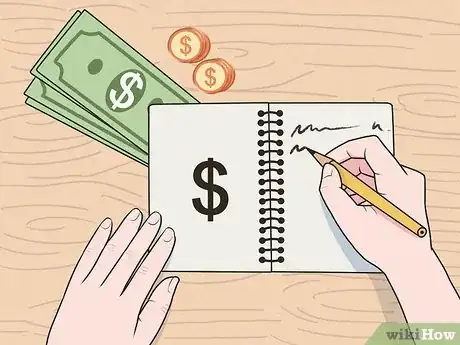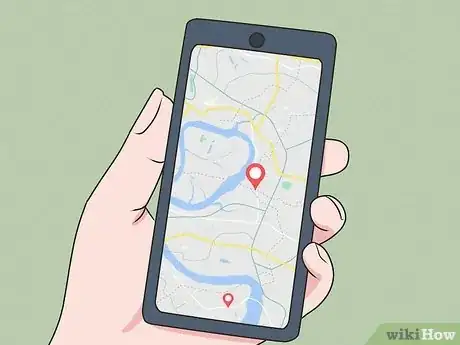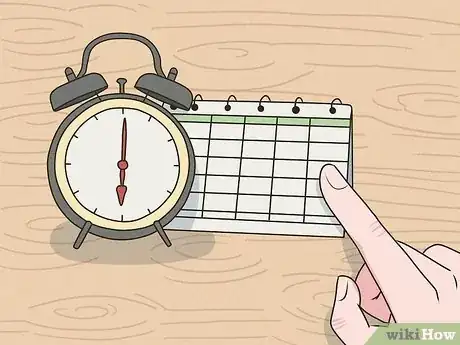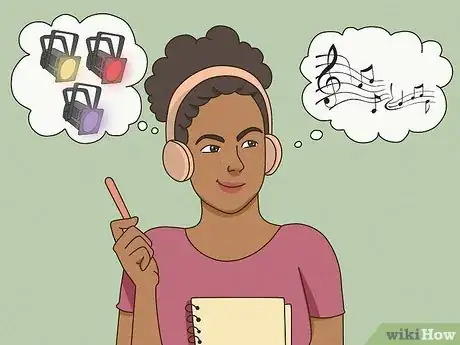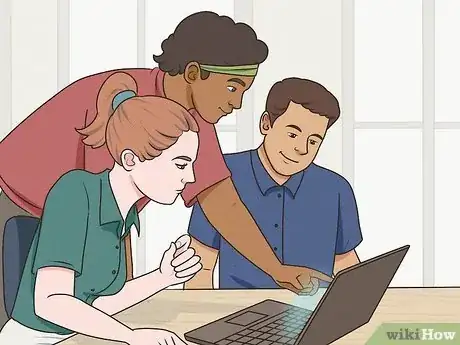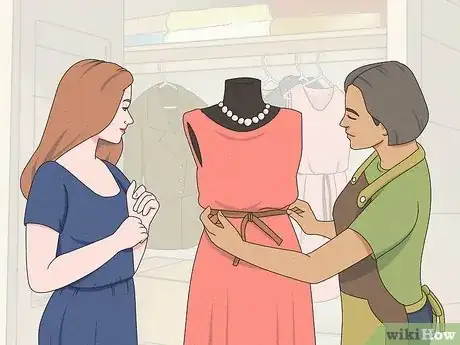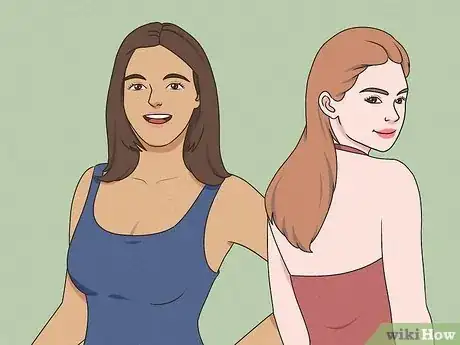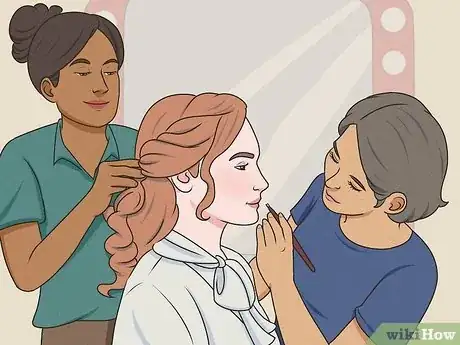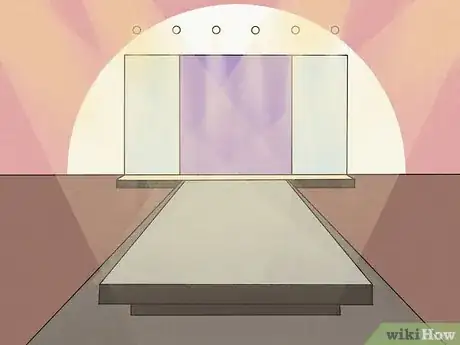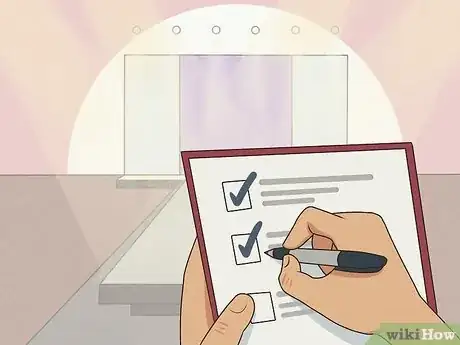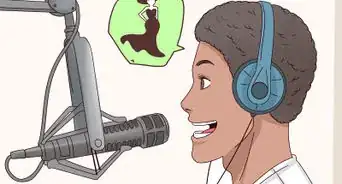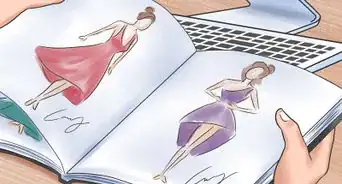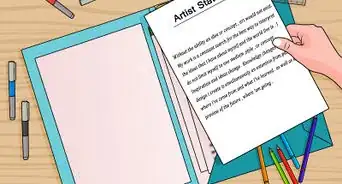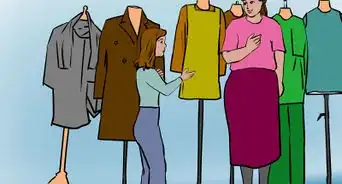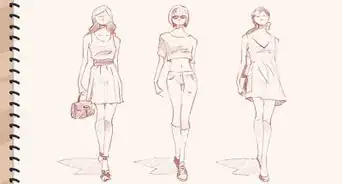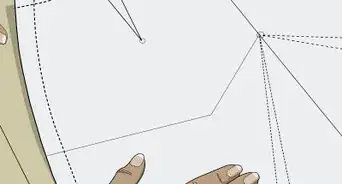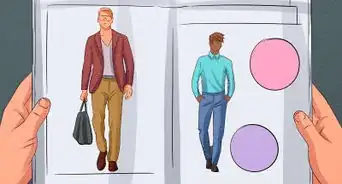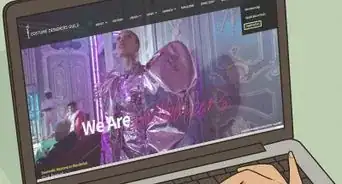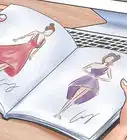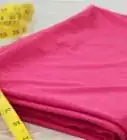This article was co-authored by Ernest Sturm. Ernest Sturm is a Marketing Expert and the Owner of Runway Influence and Runway Waiters, as well as the President of Runway Collective. With over 10 years of experience as an entrepreneur, he specializes in producing social media campaigns and social brand activations. Runway Influence has a 5-star rating and partners with luxury brands and top influencers.
wikiHow marks an article as reader-approved once it receives enough positive feedback. In this case, several readers have written to tell us that this article was helpful to them, earning it our reader-approved status.
This article has been viewed 157,148 times.
Fashion shows are a great idea for groups trying to fundraise for a cause, organize community events, or to promote local fashion designers and businesses. The key ingredients to a good fashion show are a general theme, a well-coordinated team, and a well-designed program. It is important that you come up with a plan for your show: theme, location and date, music and decorations. You will also need to organize a team of people to run the show: designers, models, hair and makeup stylists, show coordinators, and lighting and sound professionals. All of these people need to work together to make your plan succeed. Finally, you will need to come up with a detailed program of featured designers, order of models and styles, and music and lighting.
Steps
Putting Together a Plan for a Fashion Show
-
1Decide on a theme. All fashion shows are centered around a general theme.
- A theme could be fall fashion, beach fashion, lingerie, or costumes.
- Alternatively, the theme could focus on a particular color or fabric.
- The music, lighting, and decorations will have to go along with this theme.
- If you are doing the fashion show as a fundraiser, you might pick a them in line with your cause.
- For example, if you are doing a fashion show to raise money for a breast cancer charity, you might choose to showcase the color pink.
-
2Decide on a budget. If you are coordinating a fashion show to raise money for charity, you may want to keep costs as low as possible.
- See what kind of money you can expect from donations. You can use these funds to defray the cost of a fashion show.
- Decide on a price for ticket sales. These will be the primary means of getting a profit or money for a charitable cause.
- The price of tickets should be enough to cover costs of the show plus enough to reach a desired profit or donation goal.
- You might see if local designers and professionals will volunteer their time and services for the show to offset some of the costs.
Advertisement -
3Find a venue. You will need a place with lots of seating that can accommodate a runway, lights, and speakers.
- For a local fashion show, the most common places to hold them are schools and event centers.
- Oftentimes, a school will have a stage where you can build a runway.
- Remember, if you want to have a successful fashion show you will need to have practice sessions.
- Make arrangements with your venue to have rehearsals.
- Make sure the venue has a private place for models to change and get hair and makeup.
-
4Choose a date and time. This will sometimes depend on the venue for your show.
- Decide whether you want to have a daytime or evening show.
- Fashion shows are often very short events, lasting from 30 minutes to an hour.
- The time may depend on your theme and your audience.
- If your theme is beach wear, you might opt to have your show outside during the day.
- If your theme is evening wear, you should opt for an evening show.
- If you do opt to have an evening show, be prepared to provide some type of entertainment such as a DJ or band.
-
5Consider what type of lighting and music you will need. These will depend on the theme and venue.
- A venue may have a lighting system in place for you to use.
- Music should go along with the theme of the show. For example, a show featuring beach wear should have upbeat and bright, happy music.
- Regardless of the theme, the music should have a good beat for models to catwalk.
Assembling A Team
-
1Look for a show producer or backstage manager. This is the person who will know exactly what needs to happen during the show.
- All major problems will be directed at this person.
- This person will make sure everyone is doing assigned tasks.
- This person needs to have good organizational skills as well as people skills.
- He will need to have a good relationship with the stylists, designers, and models in order for the show to go smoothly.
- She should be able to pitch in and help with any of the jobs backstage whenever she is needed.
- You could hire a local event planner or producer, or ask her to donate her time and skills for a charity fashion event.
- Ideally, if you are organizing this event for a charity someone from the fundraising committee could perform this job.
- A good producer should have a good eye and a good pulse to identify the best services that could be hired to make everything go as planned, such as catering, DJs, staff, etc.
-
2Find designers and local boutiques. You will need a source for clothing and you should involve designers and local fashion business people on your team.
- You will need everything from clothing to shoes and accessories.
- Ask designers and boutiques to donate or loan clothing to your fashion show.
- Offer to provide an ad and credits to the designers in your program. This will help them to build business.
- Ask them to appear onstage at the end of the show. That way they can be involved and recognized.
- Some designers might want to be involved backstage with fitting clothing to models. Any type of involvement from the designers will help the show to go smoothly.
-
3Find models for your show. These can be professional models or volunteers.
- If you are looking for professional models, hold an open casting call or contact local modeling agencies.
- If you are looking for volunteers, make sure you advertise on social media and in local papers.
- Look for models from a diverse range of ethnic backgrounds, body types, and shapes.
- Think about featuring both male and female models, depending on your theme.
-
4Enlist hair and makeup artists. This is a very important creative role.
- Remember, only part of a model's style is the clothing. Makeup and hairstyle play a huge role in creating a complete "look".
- This role is very creative. You will need to work closely with them to make sure their styles go with the theme of the show.
- In an effort to save funds, you could ask or hire local trade schools to provide student stylists for the show. This will help them practice for big events as well as help you save on costs.
- In any event, you should have a main stylist who will check over and fine tune all of the hair and makeup styles.
-
5Find stage and lighting personnel. These people will help set up the runway and run the lighting.
- These people can also help set up the themed decorations the day of the show.
- Make sure this team can lift heavy objects and change sets quickly.
- If you choose not to have a band or DJ, this team may need to run the music and sound system for the show.
Running the Fashion Show
-
1Set up the runway, stage and venue. This should be done prior to the show to allow for rehearsals.
- You can build a raised runway from stage blocks.
- Alternatively, you can have a runway delineated on the floor.
- Make sure the changing and backstage areas aren't visible from the audience.
- Arrange the seating in the audience so that the runway is visible from all chairs.
- Plan to sit any VIPs or important guests up front.
-
2Come up with a detailed program. Decide what order the models will go in.
- This will depend on what order you want each complete look to go down the runway.
- Coordinate music and lighting to each model and look.
- Have this lineup timed, ensuring each model and look has enough time on the runway.
- Plan to have each model walk once down the runway individually, then as a group at the end of the show.
-
3Run several rehearsals. This will help the backstage manager/producer, the models, stylists, and technical team to coordinate.
- Remember, people are only human and make mistakes. A model might walk in the wrong order, for example.
- This is why rehearsals are key. These give your team a chance to work out any problems in advance before the show.
- You should try to run at least one dress rehearsal will full hair and makeup. This will allow you to see if all of the looks are polished and oriented to the theme.
-
4Check the venue on the day of the show. Make sure all of the music, lights, electrical equipment, and styling equipment are working properly.
- Make sure all outfits, styling equipment, chairs and supplies are where they need to be.
- Make sure you have a place to collect tickets, purchases, and donations.
-
5Run the fashion show. Be sure to start on time.
- One of the things that attendees will remember is if the event started on time.
- Make sure each model's look is complete before they go out onto the runway.
- Make sure photographers are ready and set up during the show to take photos.
- Remember to have fun! Fashion shows are supposed to showcase fun and creativity.
Community Q&A
-
QuestionHow do I write up a program for the fashion show?
 Community AnswerList the names of the designers in the order in which their clothing will appear and also list the names of the models.
Community AnswerList the names of the designers in the order in which their clothing will appear and also list the names of the models. -
QuestionHow do I get designers on board, as many may say it is my first time organizing a fashion show and they can not vouch that I will have a good show?
 Community AnswerIt is advisable to channel your efforts towards building credibility since it is your first show. Be sure that you do not compromise on excellence. You can start by reaching out to personally known designers, as they will be more likely to place their bets on you. Also ensure that you pay attention to little details, such as avoiding typos in your publicity materials, etc. Securing a decent venue can also be a plus. Offering complimentary slots/discounted rates can also encourage participation, as the risk factor is reduced. In the event that you are able to win over a reputable designer or a celebrated model, take steps to publicize this, as it can serve as a means of pulling others in.
Community AnswerIt is advisable to channel your efforts towards building credibility since it is your first show. Be sure that you do not compromise on excellence. You can start by reaching out to personally known designers, as they will be more likely to place their bets on you. Also ensure that you pay attention to little details, such as avoiding typos in your publicity materials, etc. Securing a decent venue can also be a plus. Offering complimentary slots/discounted rates can also encourage participation, as the risk factor is reduced. In the event that you are able to win over a reputable designer or a celebrated model, take steps to publicize this, as it can serve as a means of pulling others in. -
QuestionI have access to a stage, but I can't add any additional platforms to create a catwalk. How can I plan my show to accommodate this?
 Community AnswerDepending on the vision you have for your fashion show, additional platforms may not be necessary. Try having each model pose in the center of your stage to display the designs in the space you have available to you. If you're really pressed for space, you could also organize your event outdoors, which might even contribute positively to the show's atmosphere!
Community AnswerDepending on the vision you have for your fashion show, additional platforms may not be necessary. Try having each model pose in the center of your stage to display the designs in the space you have available to you. If you're really pressed for space, you could also organize your event outdoors, which might even contribute positively to the show's atmosphere!
About This Article
To coordinate a successful fashion show, choose a theme and location to help guide your planning process. Your theme could focus on a particular color, fabric, style, or even season. For example, a fall fashion theme could involve light jackets and autumn colors. You’ll also need a venue that can accommodate a runway, lights, and speakers. Common locations for local fashion shows are schools and event centers. Once you have a theme and location nailed down, you can work on finding models for your show. You can hold an open casting call or contact local modeling agencies to find models that suit your theme. To learn how to run the fashion show, keep reading!

